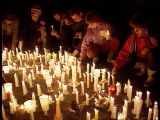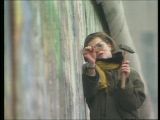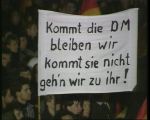Introduction

The dramatic changes in East Germany in autumn of 1989 have been labeled many things in hindsight: awakening, radical reform, even revolution. But of all the scholarly definitions and literary descriptions, none has taken as firm a hold as the expression Wende - literally, a turn. It is not the most precise phrase, and its original meaning was quite different. It was first employed by Egon Krenz on October 18, 1989, following his election as the new Socialist Unity Party (SED) General Secretary, when he uncertainly addressed the public on East German television. In his view, the removal of Party leader and head of state Erich Honecker would initiate a "turn" in Party efforts to "retake the political and ideological offensive." But the public interpreted the "turn" in its own way, taking the offensive itself. The rigged local elections of May 7, 1989 had been the last straw.
At a time when rigid social conditions in the East Bloc had finally begun to relax, Gorbachev's Soviet Union was starting to reform and opposition candidates were campaigning in Poland, East German citizens were exhorted to provide a "unanimous show of support for the candidates of the National Front" - that is, to give their unchallenged blessing to the single SED-dominated list of candidates. But now, for the first time, citizens' groups and church organizations set out to observe the ballot counting, and they registered several more percentage points' worth of crossed-out names - that is, "no" votes - than the official figures announced by Election Chairman Egon Krenz.

The disinterest in reforms on the part of SED leaders, reinforced by East Germany's official support for the violent suppression of the democratic movement in China in early June, led to a mass exodus of East Germans to West Germany, which was in any case viewed by many as an attractive alternative. By autumn, tens of thousands had reached the West through the Hungarian border with Austria or the West German embassies in Prague, Warsaw and Budapest. Despite this "voting with their feet," the doddering SED leadership, completely oblivious to reality, prepared once again to celebrate itself, choosing for the purpose East Germany's fortieth anniversary on October 7, 1989. But the celebration turned into its opposite, and would mark the beginning of the end.
In Leipzig, Dresden and Berlin, protests of as-yet unheard of magnitude took place and spread during the days that followed. In the process, they challenged the ruling party's right to continue acting in the name of the people. At the end of October, tens of thousands took to the streets shouting "We are the people" and demanding radical transformation of their society. They insisted that democratic freedoms had to become a permanent reality in Germany's east as well as its west, and they were no longer willing to be bought off with promises and a few concessions. The right to demonstrate, defiantly won in the streets, and the right to travel, which suddenly became the norm through the unexpected opening of the Wall on November 9, were followed by the rights of speech and assembly and the gradual disempowering of the ruling party and its "security organs."

At no point did opposition groups make any attempt to take direct power. The majority were certain that government without their participation was no longer possible; they believed they needed only to push consistently for rapid, free elections. The continuing rallies, especially in the south of the country, were impressive proof of this. Thus, the second phase of restructuring was characterized above all by a debate over the modalities of the first free elections in the history of East Germany, a debate in which the West German parties would then set the tone.
The clear vote on March 18, 1990 for the conservative "Alliance for Germany" and its program of rapid joinder with West Germany marked the end of the actual Wende. It was a true transfer of power, accomplished by peaceful means, and led to official unification on October 3, 1990. Germany had never before experienced a similar successful popular uprising against an illegitimate ruler. Our aim has been to document this special process in all its facets.
Christoph Links/Hannes Bahrmann
Berlin, May 1999
